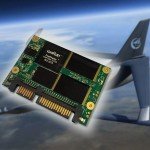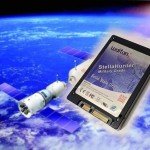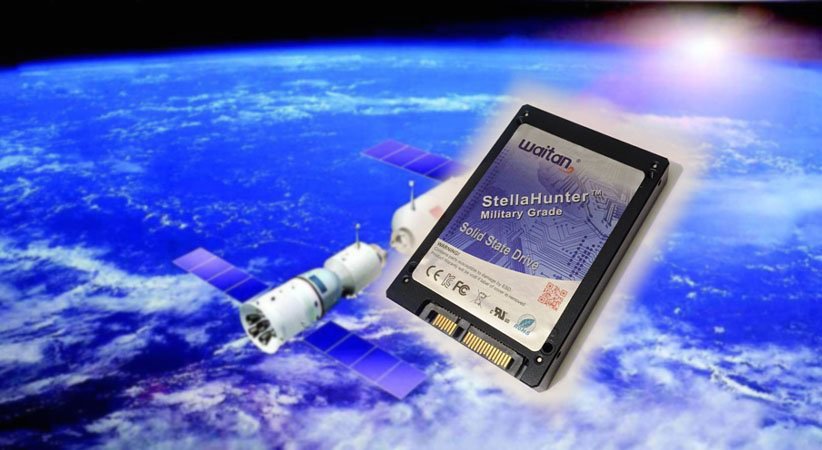
Waitan, a designer and manufacturer of military and industrial grade solid state drives, has announced its patent pending 1.8″ microSATA SSD ejector product. The ejector is said to be “the first and the only available in the market of the same kind.” It is designed to operator over -40 ~+85C ambient temperature with high resistance against shock and vibrations, which is “ideal for military and industrial computing applications where 1.8″ microSATA SSD or HDD is deployed.”
The ejector has integrated standard 16 pin microSATA socket that provides robustness and reliability for standard 1.8″ microSATA drives to be inserted and ejected for up to thousands of times.
Also, its integrated SMT type of SATA connectors provides easy-to-use mechanism that allow system manufacturers to solder the ejector on motherboard hassle-free.
Over the past ten years, form factors and interfaces of SSDs have been evolved rapidly. Among them, 1.8″ microSATA is the smallest form factor yet still maintain metal housing from which benefits both compact size and EMC shielding. However, since 1.8″ microSATA does not have mounting hole on its metal housing not like 2.5″ SATA does, many system designers have to choose other small form factors such as half slim SATA or mSATA while suffering EMC issues. But Waitan is now able to supply its unique 1.8″ microSATA ejector to the market so that the system designers can now enjoy the full range benefits of deploying 1.8″ microSATA SSD or HDD drives as system or storage disks.
Some of the major features of the Waitan 1.8″ microSATA ejector includes,
– Dual propel pedals which provides even and smooth propelling force to eject microSATA drives
– Ejecting stopper which prevents ejector from damage due to over push of ejecting handler
– Fish-Spear-Headed fastener which provide easy installation to snap in and fasten the ejector on PCB – Ejecting handler provides easy-to-use mechanism to eject a1.8″ microSATA drives
– Full length ejecting strip which provides balance of force applied to the microSATA socket and connector area. Hence it prevents both ejector and microSATA device from damage, and it also increases endurance of the ejector and the device.
– Ejector guiding rail which provides straight line for steel ejector to move back and forth smoothly with even force applied during motion, which further protects ejector and device from damage and to increase endurance for both.
For more info visit waitanssd.com.








 Texas Memory Systems announced that its
Texas Memory Systems announced that its .jpg) The RamSan-6200 is a scaled up system that combines twenty RamSan-620 solid state disks in a single datacenter rack and uses Texas Memory Systems’ TeraWatch software to provide unified management and monitoring from a single GUI console.
The RamSan-6200 is a scaled up system that combines twenty RamSan-620 solid state disks in a single datacenter rack and uses Texas Memory Systems’ TeraWatch software to provide unified management and monitoring from a single GUI console. 

 "Panasas has now upped the ante in terms of performance relative to footprint and is allowing customers to reduce management costs and increase productivity by consolidating on a single platform," said Terri McClure, senior analyst at analyst firm Enterprise Strategy Group.
"Panasas has now upped the ante in terms of performance relative to footprint and is allowing customers to reduce management costs and increase productivity by consolidating on a single platform," said Terri McClure, senior analyst at analyst firm Enterprise Strategy Group. 
 According to IBM, additional enhancements to SVC include 8Gbps Fibre Channel support, enabling higher throughout across Storage Area Networks, a tripling of the maximum cache to 24GB per engine, and support for consolidated DR configurations, enhancing SVCs business continuity capabilities.
According to IBM, additional enhancements to SVC include 8Gbps Fibre Channel support, enabling higher throughout across Storage Area Networks, a tripling of the maximum cache to 24GB per engine, and support for consolidated DR configurations, enhancing SVCs business continuity capabilities. .jpg) Dramatic decreases in the cost of Solid State Disk (
Dramatic decreases in the cost of Solid State Disk ( “Whereas in the past a poorly-designed database might take six months and $500,000 in consulting costs to repair, simply installing SSD can mean the database immediately runs more than ten times faster for a fraction of the cost of repairing the source code. We wrote the book specifically for DBAs so that they could easily understand the benefits and limitations of SSD in their specific circumstances, and have all the tools they need to benchmark effectively. Any DBA who wants to keep their performance tuning skills relevant will read this book.”
“Whereas in the past a poorly-designed database might take six months and $500,000 in consulting costs to repair, simply installing SSD can mean the database immediately runs more than ten times faster for a fraction of the cost of repairing the source code. We wrote the book specifically for DBAs so that they could easily understand the benefits and limitations of SSD in their specific circumstances, and have all the tools they need to benchmark effectively. Any DBA who wants to keep their performance tuning skills relevant will read this book.”